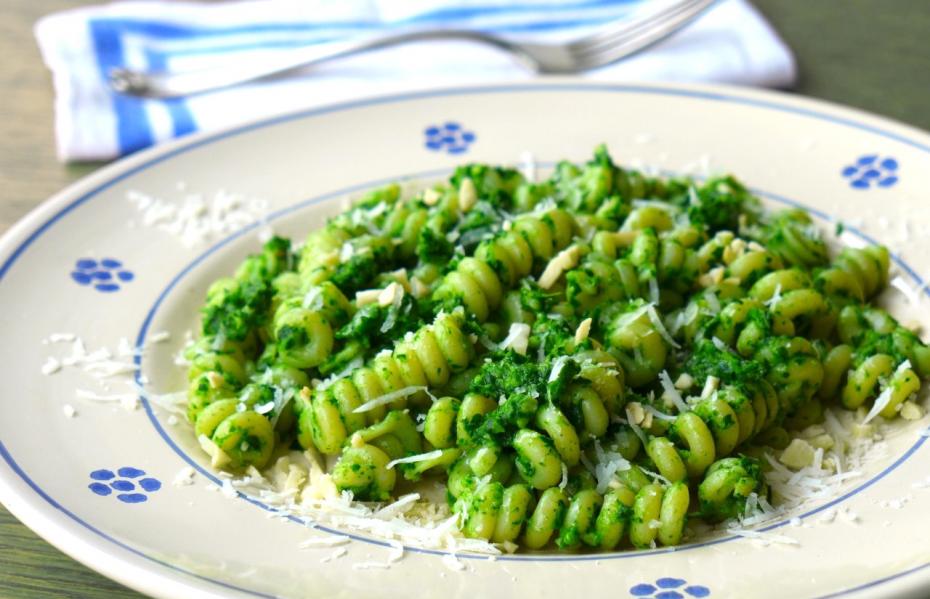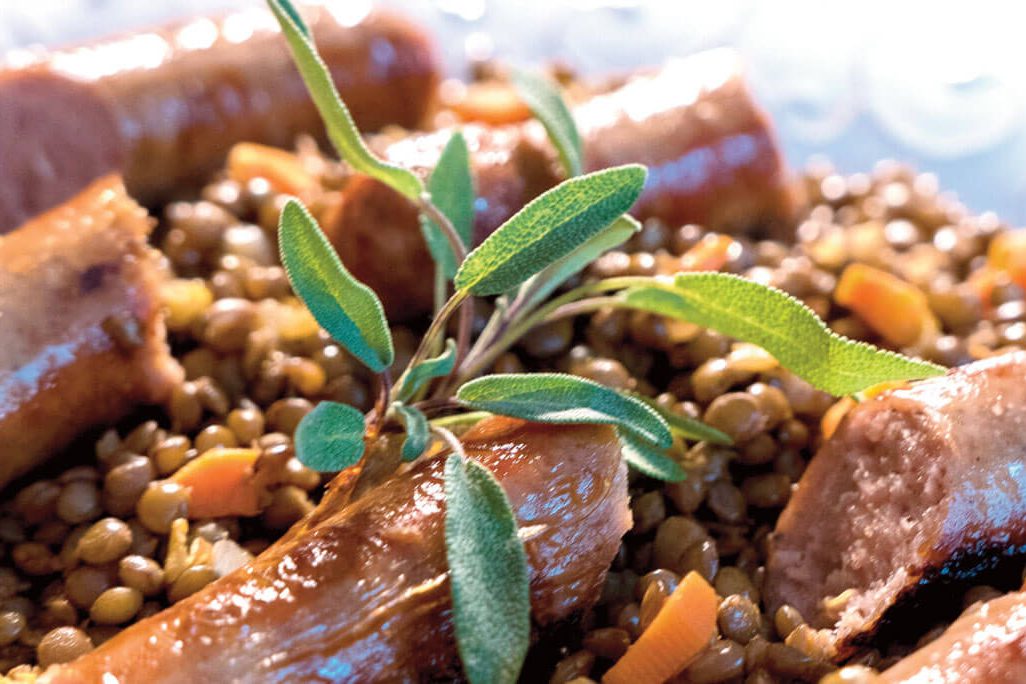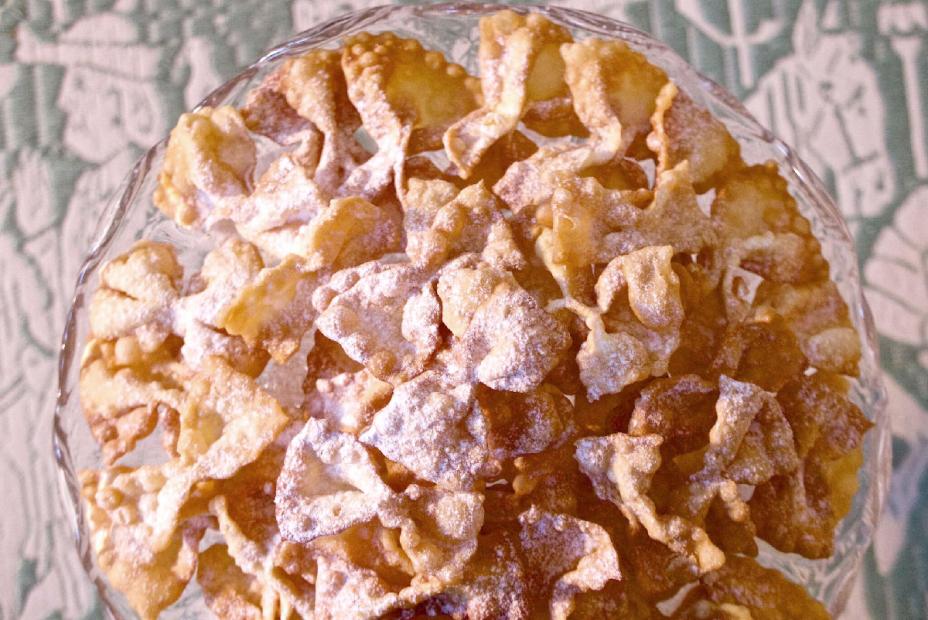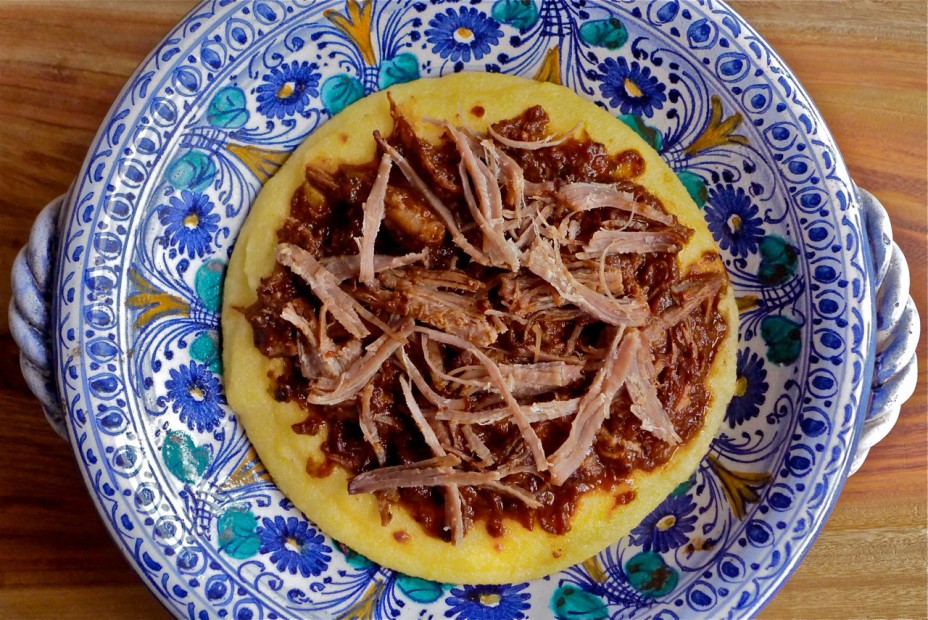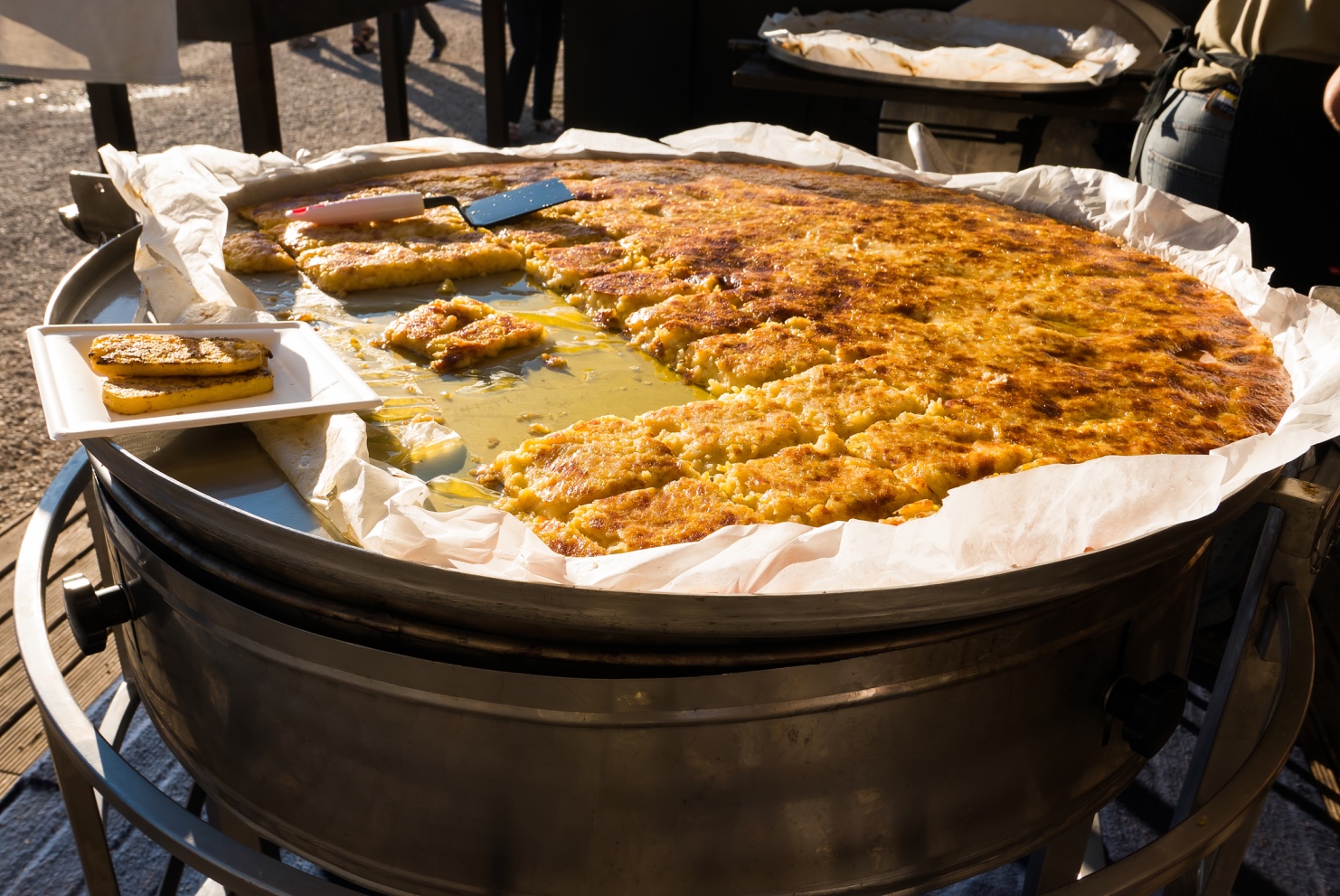Recently, I invited a friend of mine over to try out some new recipes I was working on. “But how do you think of all those different things?” she asked, open-mouthed.
First let me tell you that my friend, Joan Gussow, is a famous environmentalist and self-described food producer who has written some pretty important books that have influenced the likes of Michael Pollan, Alice Waters and Dan Barber. Even at 87, she grows nearly all her own food in her famous organic vegetable garden on the west bank of the Hudson River. Considering her impressive knowledge of plants, not to mention the world-class chefs and other food celebrities she runs with, I can take pride in saying that I was the first to get her to like rapini and other bitter greens.
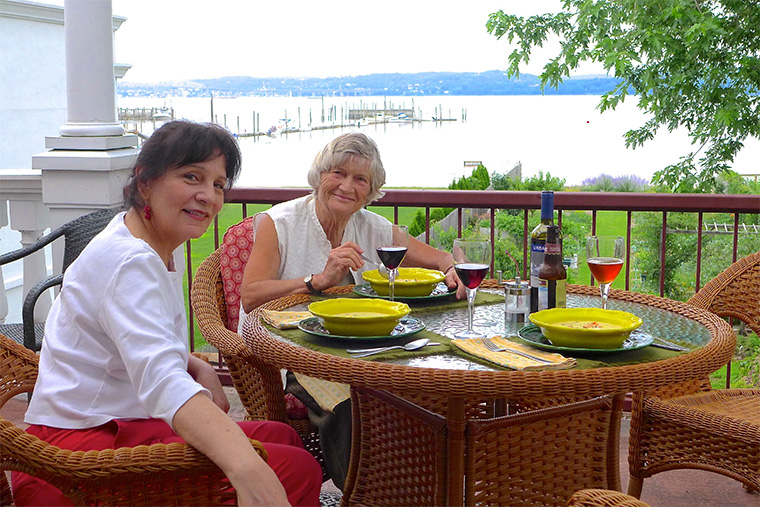
I answered her that because I’d grown up in an Italian family, I had a pretty deep well to draw from. I was eight when I cooked the first family meal entirely by myself.
Not long after that lunch, a story landed in my inbox from Joan titled “A Terrible Gift.” It was all about a revelation she had after leaving my house that afternoon. Here is an excerpt:
“I did not grow up around exquisite food. My mother was the youngest of six in a not-very-well-to-do Iowa family and knew nothing at all about food and cooking…when she met and married my father (also a fugitive from Iowa winters) in California…. Her standard cooking methods were boiling vegetables and frying or occasionally roasting meats until they gave up.”
She then describes some of her early efforts at cooking, beginning with “pizza” made by topping an English muffin with mozzarella, canned tomato sauce, a dash of oregano and the pièce de résistance of the recipe, pepperoni—all run under the broiler.
“It has been a staggering journey—not staggering in the emotionally demanding sense, but literally staggering from place to place across the food horizon trying to determine what went with what,” she writes. “So it wasn’t until a few weeks ago that I suddenly came to understand why it has been so hard to get here, why the food gift I was given in childhood was so terrible. I have a friend who writes Italian cookbooks…. After twenty cookbooks, how does she think of all those different things? And then it hit me. She has a tradition. The gift she brought from her not-too-loving childhood was a deep, deep tradition of Italian…flavors that suffuses her life, her household, and her cooking. She doesn’t even know she has it. It’s just there.”
It’s true that I don’t know where half the things I think up come from. Everything my mother cooked had a story attached to it, whether it was about how my Sardinian grandmother baked polenta between layers of ragù, or how eating field greens like broccoletti di rapa, aka rapini as they are known here, saved my other grandmother from starvation in her native Puglia. Somehow, I picked up an awful lot, even if there were no written recipes. Until Joan put it that way, I didn’t think of it as a gift, but she’s right— it’s been the gift of a lifetime.
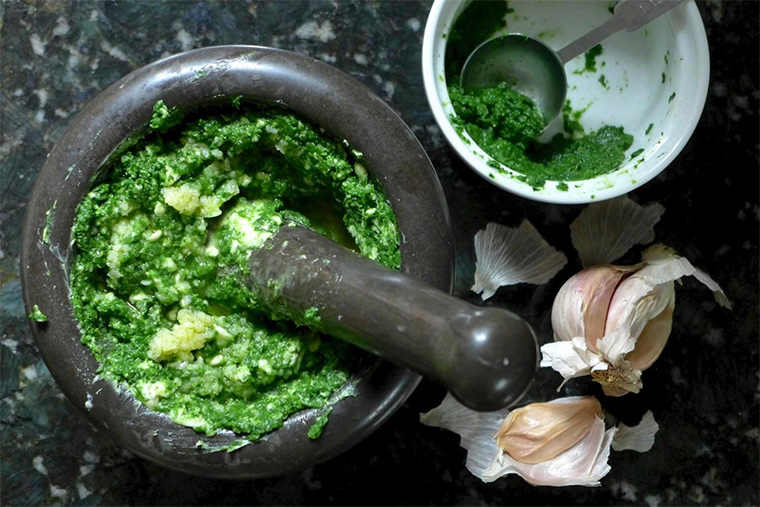
Rapini Pesto
Makes 1-1/2 cups
It is not quite the season for the summer vegetables we eagerly anticipate but one stalwart crop that keeps on giving is the Italian vegetable, Brassica rapa, aka rapini, among other aliases. The cooked stems contribute body and natural creaminess, making it unnecessary to use as much oil as many pestos call for. It’s important to peel the broccoli rabe stems before cooking for a silky texture. Toss the pesto with freshly cooked imported fusilli, orecchiette, or penne.
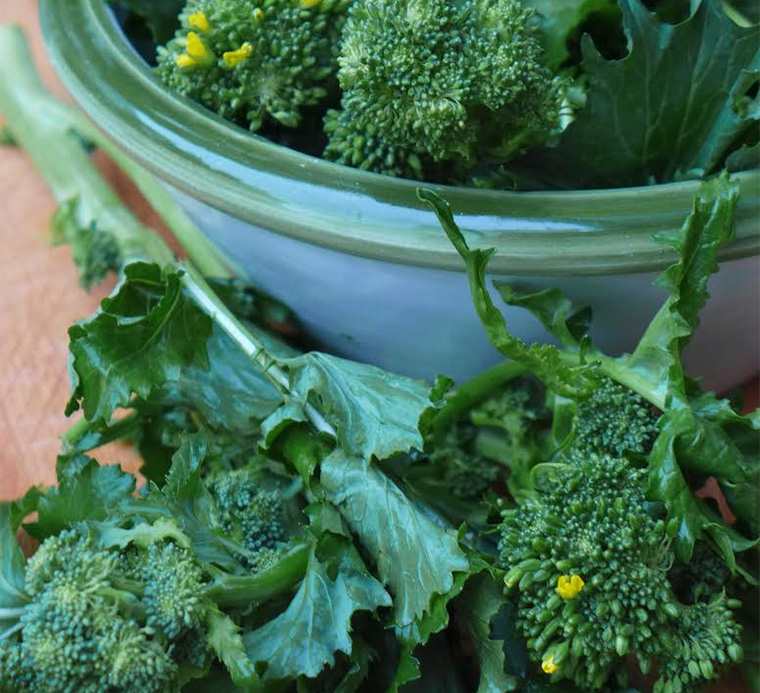
•1 bunch rapini
•2 tablespoons kosher salt for cooking water
•pinch of hot red pepper flakes
•1/4 cup good extra-virgin olive oil
•fine sea salt to taste
•1/2 cup freshly grated Pecorino Romano
1. Cut the stems from the crowns of the rapini. Peel the tough lower stems as you would asparagus. Chop the upper portion coarsely. Wash the prepared greens in abundant cold water and drain.
2. Bring enough water to cover the greens to rolling boil. Add the kosher salt, then the rapini. Cook over high heat until the greens are thoroughly tender, 8 minutes. Use a mesh strainer to lift them out of the pot and transfer them to a colander; save the cooking water. Drain the rapini well, pressing to release excess moisture. They should be moist but not wet.
3. Grind the garlic and pepper flakes in a food processor. Add the drained greens and 1/4 cup olive oil; pulse to a creamy puree, about 6 seconds. Check for salt. In a shallow bowl, toss 6 tablespoons of the pesto to a pound of freshly cooked and piping hot pasta and fold in the grated cheese (you can freeze the remaining pesto). Serve the pasta hot with an additional thread of olive oil, if desired, and pass more grated cheese at the table.
Julia della Croce is a food writer and James Beard award-winning cookbook author and recipe developer based in New York. She is presently incubating a book about her family’s ancestral region, Sardegna. Visit her website, www.juliadellacroce.com and blog, http://juliadellacroce.com/forktales1/, connect on Facebook: Julia della Croce – chef & foodwriter, Twitter: @juliadellacroce and Instagram: juliadellacroce.
